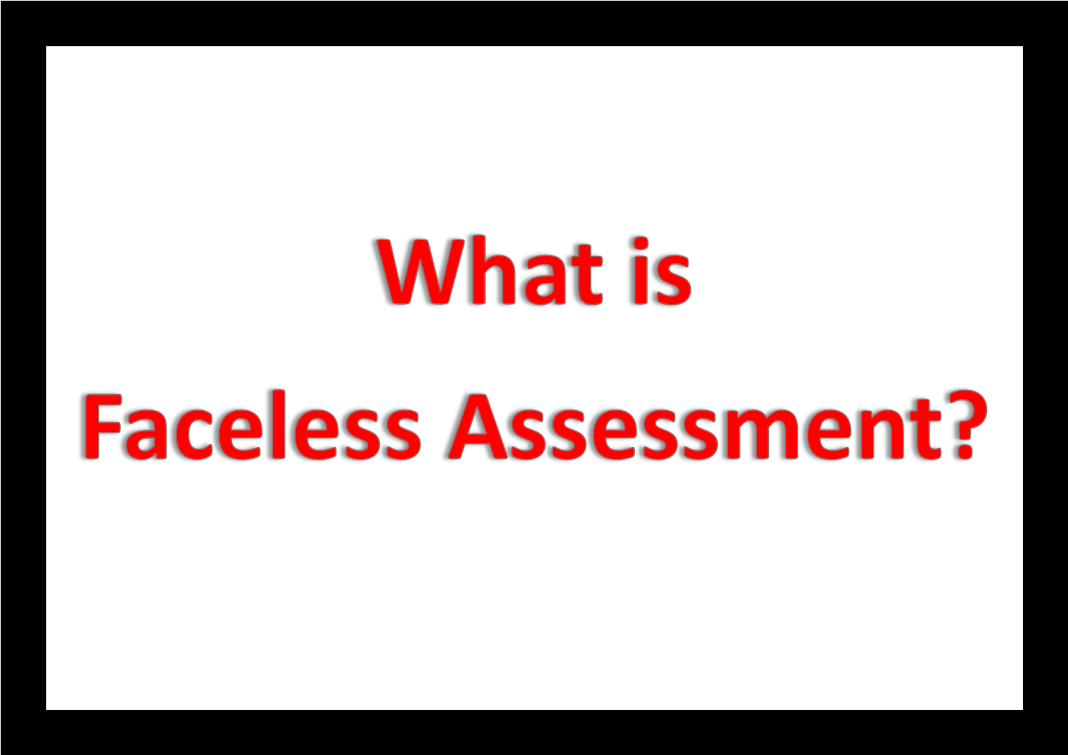The Faceless assessment scheme for tax administration was launched by the Finance Minister in the Union Budget 2019 (July) to ensure transparency in tax administration by avoiding the direct contact between the tax officials and the taxpayer.
What is faceless assessment?
Under faceless assessment, verification, and assessment of tax statements of taxpayers are done remotely and electronically without having direct contact between the taxpayer and the tax officials.
So, the direct contact between the tax officials and taxpayers are avoided. This reduces scope for any corruption and harassment.
Both direct tax department (CBDT) and the indirect taxes department (CBIC) have launched faceless assessment for their important taxes.
Faceless assessment is thus a tax reforms aimed to ensure transparency in the dealings of the tax officials in their contact with taxpayers.
Objective of the scheme
The scheme aims to eliminate the human interface between the taxpayer and the income tax officials. So, there can be more transparency in the communication provided by the tax department to the taxpayers. The scope for corruptive intervention by tax officials can be avoided through faceless assessment.
It brings greater transparency with randomised and automated system in the correspondence between the taxpayer and tax officials. There is no individual discretion in assessment process and thus it enhances trust between income tax department and taxpayers.
Method for faceless assessment
The scheme adopts procedures to carry out a faceless assessment through electronic mode. Faceless randomised assessments have two stages — technical assessment and verification.
In the first stage, a team of experts will assess technical aspects associated with personal or corporate tax. In the second stage, assessment will be verified by another team before sending a notice to the taxpayer. Officials for assessment will be selected randomly. So, under faceless assessment, officials will have no link with assesses, and taxpayers will not face any alleged harassment by tax officials.
Implementation of the programme by CBDT and CBIC
Both the Central Board of Direct Taxes (CBDT) for direct taxes and the Central Board of Indirect Taxes and Customs (CBIC) have launched steps for implementing faceless assessment ford their corresponding tax administrations. Still, the CBDT has launched extensive measures as the faceless assessment is very important for direct taxes.
Faceless assessment mechanism by CBDT – the organisational structure
Regarding direct taxes, the CBDT has framed a mechanism for implementing the scheme. It works through the organisational structure of National e-assessment centre (NeAC).
National e assessment center (NeAC) : it acts as the central cell between the tax payer and the Income Tax Department. The NeA in Delhi was inaugurated on 7th October 2019. It is headed by Principal Chief Commissioner of Income Tax
The NeAC is supported by Regional e Assessment Centers (ReAC), Comprising of:
- Assessment Unit
- Review Unit
- Technical Unit and
- Verification Unit
Each ReAC to be headed by Chief Commissioner of Income Tax.
Progress in faceless assessment
So far, 8 ReAC‘s are set up at Delhi, Mumbai, Chennai, Kolkata, Ahmedabad, Pune, Bangalore and Hyderabad.
The income-tax department selected about 58,000 cases for faceless assessment in October 2019. So far, about 8,000 cases have been settled.
Turant Customs – faceless assessment by CBIC
The Central Board of Indirect Taxes and Customs also launched faceless assessment under the Turant Customs initiative. An additional objective of Turant Customs is speedy clearance of imports both in seaports and airports. The programme aims to improve India’s ranking in the Ease of Doing Business Index.
Under Turant Customs initiative, there is no direct contact between importers and customs officer. This will provide uniformity in assessment across the country. The Customs officers located outside the port of import will clear the goods after making faceless assessment remotely. For example, the goods imported at Mumbai may be assessed by the Customs officers located at Bengaluru and vice versa, through an automated system.
*********










